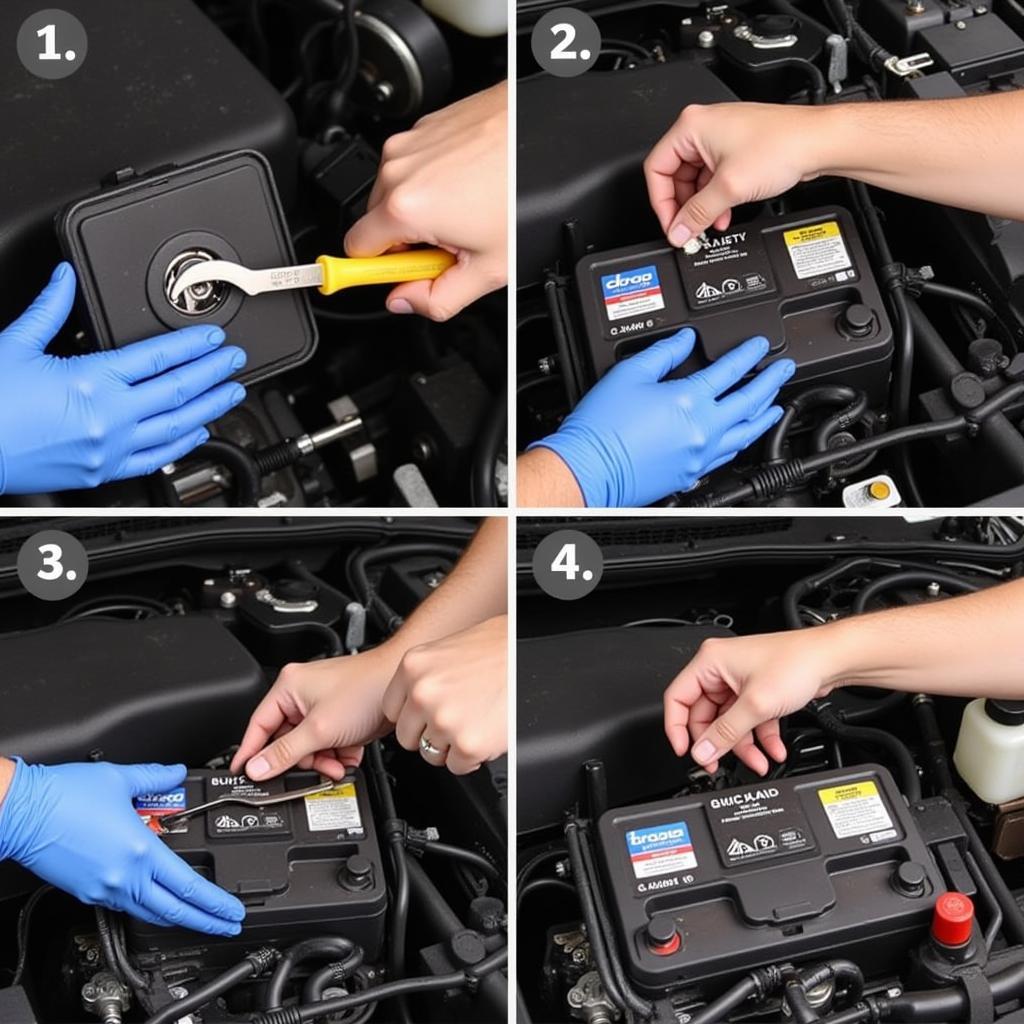A dead car battery is frustrating, especially if it happens repeatedly. Understanding the reasons your car battery keeps dying is crucial for preventing future headaches and saving you money. This article dives into the common culprits behind a consistently draining car battery, empowering you to diagnose and fix the problem. We’ll explore everything from parasitic draws to faulty alternators, providing you with the knowledge you need to get your car back on the road. car battery parasitic drain
Common Culprits Behind a Dying Car Battery
Several factors can contribute to a car battery constantly needing a jump-start. Some are easy to fix, while others require professional attention. Let’s break down the most frequent reasons your car battery keeps dying.
Parasitic Drain: A Silent Battery Killer
A parasitic drain, also known as a parasitic draw, occurs when an electrical component continues to draw power even after the car is turned off. This slow but steady drain can deplete your battery overnight or over a few days. Common culprits include interior lights left on, faulty door switches, or malfunctioning aftermarket accessories. Identifying and fixing the parasitic draw is essential for preventing a dead battery. You can perform a parasitic drain test to pinpoint the problem.
Failing Alternator: The Power Generation Problem
Your car’s alternator is responsible for recharging the battery while the engine is running. If the alternator is faulty, it won’t properly recharge the battery, leading to a gradual decline in charge and eventually a dead battery. Symptoms of a failing alternator include dimming headlights, flickering dashboard lights, and strange noises coming from the engine compartment.
Old Age: Batteries Don’t Last Forever
Like any other component, car batteries have a limited lifespan, typically between three to five years. As a battery ages, its ability to hold a charge diminishes. If your battery is nearing the end of its life, it might be time for a replacement. Extreme temperatures, both hot and cold, can also shorten a battery’s lifespan.
 Replacing an Old Car Battery
Replacing an Old Car Battery
Short Trips and Infrequent Driving: Not Enough Time to Recharge
If you primarily drive short distances, your alternator may not have enough time to fully recharge the battery after starting the car. This can lead to a slow drain over time, especially in colder weather when the battery’s capacity is reduced. Try to take longer drives occasionally or use a battery charger to maintain a healthy charge.
Corroded Battery Terminals: A Weak Connection
Corroded battery terminals can create resistance, preventing the alternator from properly charging the battery. This resistance can also make it difficult for the battery to deliver power to the starter motor. Regularly cleaning your battery terminals with a wire brush and applying a protective coating can prevent corrosion.
How to Identify and Address the Issue
check parasitic draw car battery Learning how to check for a parasitic draw is crucial for diagnosing battery drain problems. If you suspect a failing alternator, have it tested by a qualified mechanic. Remember, regular battery maintenance, including cleaning terminals and checking the charging system, can extend your battery’s lifespan.
Why is my car battery dying overnight?
A parasitic draw is often the culprit behind a car battery dying overnight. This means an electrical component is drawing power even when the car is off.
acceptable parasitic draw on car battery Understanding what’s considered an acceptable parasitic draw is key to diagnosing a faulty system.
Can a bad alternator drain the battery while driving?
While driving, a bad alternator won’t recharge the battery, leading to a gradual drain and eventual failure.
parasitic drain test car battery Testing for a parasitic drain can rule out a major cause of battery drain.
What if there’s no parasitic draw, but the battery still dies?
no parasitic draw but battery dies If there’s no parasitic draw but your battery keeps dying, a failing alternator or an old battery is likely the cause.
Expert Insights
“A common mistake car owners make is ignoring the early signs of a failing battery,” says John Smith, a certified automotive technician with 20 years of experience. “Regularly checking your battery and charging system can prevent unexpected breakdowns.”
“Modern cars have complex electrical systems, making it challenging to diagnose parasitic draws without the right tools and knowledge,” adds Jane Doe, an electrical systems specialist with over 15 years in the automotive industry. “Using a multimeter to test for parasitic draw is an essential step in troubleshooting.”
Conclusion
Knowing the reasons your car battery keeps dying is crucial for maintaining your vehicle’s reliability. From parasitic draws to failing alternators, this article has explored the common culprits and provided you with the knowledge to address the issue. By understanding these issues and taking preventative measures, you can avoid the frustration of a dead car battery and ensure reliable starts every time.
FAQ
- How long should a car battery last? Typically, three to five years.
- How can I test my car’s alternator? A multimeter or a dedicated alternator tester can be used.
- What is a parasitic draw? A parasitic draw is when an electrical component draws power even when the car is off.
- How can I prevent my car battery from dying? Regular maintenance, including cleaning terminals and ensuring the alternator is functioning correctly, is key.
- Is it safe to drive with a failing alternator? It’s not recommended, as it can lead to a complete electrical system failure.
- Can extreme cold weather drain a car battery? Yes, cold temperatures can significantly reduce a battery’s capacity.
- How often should I clean my car battery terminals? Cleaning them every few months or as needed is recommended.

